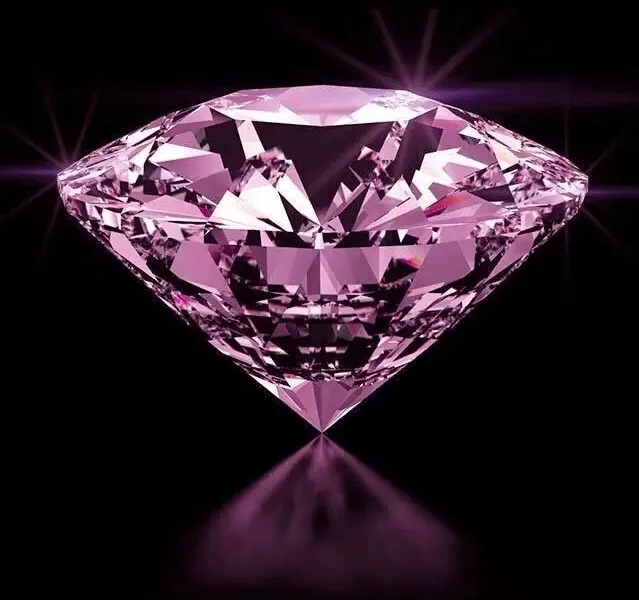Distinguishing between moissanite and diamond is essential when choosing a gemstone. Although they appear similar, differences in optical properties, weight, and the use of specialized tools can help identify them.
Can You Identify Moissanite and Diamond with the Naked Eye?

With the naked eye, particularly between VVS diamonds and GRA moissanite, it’s challenging to spot differences. Moissanite has more rainbow-like brilliance, but without professional tools, it’s difficult to make an accurate distinction. VVS diamonds usually have exceptional clarity and brightness, making them visually similar to moissanite.
The Impact of Double Refraction

Moissanite exhibits double refraction, creating a doubled image of its facets under magnification. This effect is particularly noticeable in GRA moissanite with complex cuts, where even experienced jewelers may struggle to distinguish it from diamonds using simple tools. Jewelers often rely on thermal conductivity and electrical conductivity testers to detect double refraction.
Color Differences

High-quality GRA moissanite is nearly colorless, similar to VVS diamonds, but may show slight gray or yellow tones in certain lighting. In contrast, diamonds are graded from D (completely colorless) to Z (visible color). While GRA moissanite can be nearly colorless, these subtle color differences can be a key factor in distinguishing the two.
Weight Differences and Testing Methods
Moissanite is slightly less dense than diamonds, making it lighter in equal sizes. This small weight difference can lead to confusion. To avoid this, professional jewelers often use testers that measure thermal and electrical conductivity to accurately differentiate diamonds, GRA moissanite, or cubic zirconia.
Can You Differentiate After Setting?

Even after setting, professional jewelers can still distinguish between diamonds and moissanite using these testing tools. Additionally, optical tests and microscopic examination, particularly of the facet overlaps and brilliance, can further confirm the gemstone’s identity.
Effectiveness of Testers

Testers are highly effective in distinguishing between diamonds, moissanite, and cubic zirconia. Since cubic zirconia has much lower thermal conductivity than diamonds, testers can easily differentiate them. When distinguishing between diamonds and moissanite, testers can provide reliable results, but for complete accuracy, combining these tools with other identification methods is recommended.
Conclusion
By understanding the double refraction, color, weight, optical properties, and the use of professional testing tools, you can more accurately distinguish between these two gemstones. This knowledge will help you make informed choices, whether you are considering VVS diamonds, GRA moissanite, or natural diamonds.
FAQs on Distinguishing Moissanite from Diamond
1. Can you tell the difference between moissanite and diamond with the naked eye?
- It’s challenging to distinguish between VVS diamonds and GRA moissanite with the naked eye due to their similar appearance. Professional tools are often required.
2. What is double refraction, and how does it affect moissanite?
- Double refraction in moissanite causes a doubled image of its facets under magnification, making it distinct from diamonds.
3. How do moissanite and diamond differ in color?
- GRA moissanite is nearly colorless but may have slight gray or yellow tones, while diamonds are graded from D (colorless) to Z (light color).
4. Can testers accurately distinguish between moissanite and diamond?
- Yes, testers measuring thermal and electrical conductivity can reliably differentiate diamonds from GRA moissanite and cubic zirconia, though they should be used alongside other methods for complete accuracy.
5. Does setting the gemstone affect the ability to differentiate between moissanite and diamond?
- Even after setting, professional jewelers can still distinguish between the two using specialized tools and optical tests.






